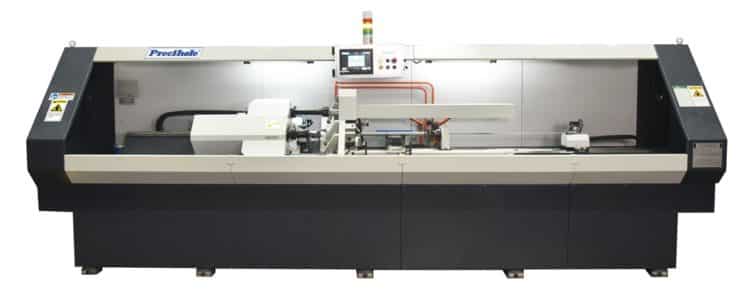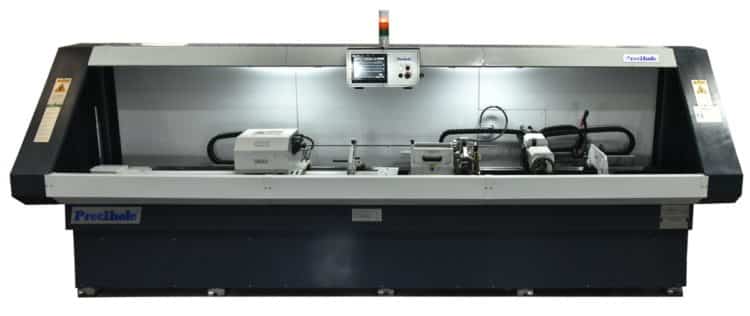Rifling
Precihole Barrel Rifling Machines
The rifling process is a key part of barrel manufacturing, as rifle and pistol barrels require rifling to shoot accurately. Rifling refers to the spiral grooves that are cut into the internal surface, known as the bore, of a gun barrel. The helical groves cause the bullet to spin when fired, stabilizing the trajectory and improving accuracy.
This process is often described by its twist rate, which indicates the distance the rifling takes to complete one full revolution; for example, “1 turn in 10 inches” (1:10 inches), or “1 turn in 250 mm” (1:254 mm). A shorter distance indicates a faster twist, meaning that for a given velocity the projectile will be rotating at a higher spin rate.
Button rifling and cut rifling machines are for smaller calibers from 0.22 to 50 BMG. Broach rifling machines can be used for medium and large caliber weapon systems.
ABSOLUTE IS A PROUD SUPPORTING MEMBER OF THE NSSF

Machines
Precihole’s Barrel Rifling Solutions:
Button Rifling vs. Cut Rifling vs. Broach Rifling
Button rifling is a cold forming process that swages rifling in the barrel with a carbide tool that has grooves in a specific dimension and twist rate. Button rifling is a single-pass operation, where the button is pushed or pulled at a controlled rate through the bore of a barrel blank, resulting in the desired lands and grooves. Button rifling is a highly controlled process that is repeatable across an entire production lot. Progressive twist is possible with the button rifling process. Because of the simplicity, consistency, and short cycle time that button rifling offers, this is by far the most commonly used process in rifle barrel manufacturing by volume. Common applications include hunting rifles, MSR style rifles, and some precision rifles and pistols.
Sometimes referred to as hook rifling, cut rifling is a metal cutting process that uses a carbide “hook” to cut a single groove in the barrel. The process requires several passes to cut the groove to its final depth. The tool cuts one of the grooves, indexes, then cuts the next groove and indexes again until the desired number of grooves have been cut. The hook is advanced out or deepened via a wedge type system, and the process is repeated. The whole cycle may include many passes to achieve the final depth of the groove in a barrel. Manufacturers have great control over groove depth due to the minimal depth of cut per pass and the number of passes per cycle. By simply running another pass, the groove can be cut slightly deeper to achieve the desired groove diameter. Because the tools are not specific to a twist rate, manufacturers are able to use a single tool for a range of rifling configurations. Cut rifling is commonly used for high-end precision rifle applications.
Broach rifling is a metal cutting process that uses a long tool with multiple teeth that takes small amounts of material out of each groove. The broach is fed down the barrel with a rotation that matches the twist ground in the tool, with each progressive tooth increasing the depth of cut. This is a similar process to cut rifling, but only requires a single pass. Broach rifling offers a distinct cycle-time advantage, which is comparable to that offered by button rifling, by using a single pass. Because of the upstream manufacturing efficiencies, broach rifling is a popular process for machining pistol barrels.




